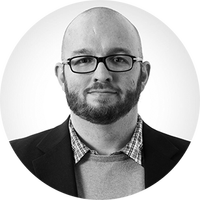The morbid fates of presidential assassins
John Hinckley Jr. is free. What happened to his predecessors?


John Hinckley Jr. is free. The man who shot Ronald Reagan in 1981 was released from his final court restrictions this week — four decades after he was found not guilty by reason of insanity. Hinckley, now 67, spent most of the intervening years at St. Elizabeths, a mental institution in Washington D.C., although his restrictions had been gradually loosened over the last 20 years. Up next: He plans to pursue a music career.
Hinckley isn't the first would-be presidential assassin to walk free. Often, however, they have come to gruesome ends. Here is a timeline of some of his predecessors — and their fates.
Richard Lawrence
Lawrence tried and failed to kill Andrew Jackson in 1835 — and nearly got a beating from the president instead. The unemployed painter pulled a pistol and aimed it at Jackson, but it misfired. "As Lawrence withdrew a second pistol, Jackson charged his would-be assassin," Lorraine Boissoneault writes for Smithsonian Magazine. "He then attempted to batter the attacker with his cane." Lawrence's second pistol also misfired, amazingly. He went to trial — prosecuted by Francis Scott Key, who wrote the national anthem — and, like Hinckley, was found not guilty by reason of insanity. He died in a mental hospital in 1861.
The Week
Escape your echo chamber. Get the facts behind the news, plus analysis from multiple perspectives.

Sign up for The Week's Free Newsletters
From our morning news briefing to a weekly Good News Newsletter, get the best of The Week delivered directly to your inbox.
From our morning news briefing to a weekly Good News Newsletter, get the best of The Week delivered directly to your inbox.
John Wilkes Booth
Booth, one of the most infamous figures in American history, shot Abraham Lincoln in 1865 — then jumped to the stage from the Ford's Theatre balcony and fled on horseback. The manhunt for Booth was "one of the biggest in U.S. history, involving nearly 1,000 Union soldiers," Lindsey Konkel writes for History.com. He eluded capture for two weeks, but was finally found at a Virginia farm. Rather than surrender, he let his pursuers know he would fight. "The troops lit the barn on fire. When Booth finally emerged from the burning barn, Union soldier Boston Corbett shot him in the neck."
Charles J. Guiteau
Guiteau "was, by all accounts, not a stable person," Brian Resnick wrote for The Atlantic in 2015. He was a "die-hard supporter" of James Garfield's candidacy for the presidency — but failed to get a government job after Garfield won. "After weeks of careful stalking, Guiteau shot Garfield, twice" in 1881 at a railroad depot in Washington D.C. Garfield survived 80 agonizing days before succumbing to his wounds. Guiteau was executed for his crime in 1882 — and pieces of his brain are still part of the collections at the National Museum of Health and Medicine and at Philadelphia's Mütter Museum.
Leon Czolgosz
"Czolgosz called himself a socialist, sometimes an anarchist," Susan Berfield writes for Lapham's Quarterly. He shot William McKinley in September 1901, and McKinley died a week later. The process thereafter was remarkably speedy: "Czolgosz's trial lasted barely two days. The jury deliberated for 30 minutes." On Oct. 29 — not even two months later — the assassin was put to death by electric chair, and his body buried in an unmarked grave.
Giuseppe Zangara
Zangara, a 32-year-old Italian immigrant, tried and failed to kill Franklin Roosevelt in February 1933, a few weeks before Roosevelt's inauguration. He failed because a bystander, Lillian Cross, "seized the pistol-arm of Giuseppe Zangara and grimly matched the muscles of her 100-pound body against him," knocking his aim off-target, according to a contemporaneous UPI account. But a bullet did hit Chicago Mayor Anton Cermak. Again, justice was extraordinarily swift: Zangara was executed barely a month after the shooting. His final words: "Go ahead. Push the button."
A free daily email with the biggest news stories of the day – and the best features from TheWeek.com
Oscar Collazo
Collazo and Griselio Torresola were Puerto Rican nationalists who apparently tried to kill President Harry Truman in 1950. Why "apparently"? Collazo "maintained that he never intended to kill anyone" and intended "only to stage a political demonstration to call attention to Puerto Rico's problems," Martin Weil wrote for the Washington Post in 1994. That's unlikely, given that the two men got into a shootout with security outside Truman's residence — the White House was closed for renovations at the time. Torresola was killed during the fight; Collazo killed a White House police officer. Sentenced to life in prison, Collazo was freed in 1979 by President Jimmy Carter. He died of a stroke in 1994, at the age of 80.
Lee Harvey Oswald
The first assassination of the television age — and the birth of a thousand conspiracy theories. Officially, Oswald was the lone shooter who killed John F. Kennedy during a Dallas motorcade on Nov. 22, 1963 — although that account of JFK's death has been widely contested over the years. What happened next, though, is well-known because it happened on national television: Jack Ruby, a nightclub owner, shot Oswald on Nov. 24 as he was being transferred from Dallas police headquarters to a more secure facility. Oswald died; Ruby died in 1967.
Lynette "Squeaky" Fromme and Sara Jane Moore
These two women separately tried to kill Gerald Ford, just 17 days apart in September 1975. Fromme, 26, "was one of Charlie Manson's oldest and most devoted supporters," Sarah Laskow wrote for Atlas Obscura in 2015. Moore, 45, was a mother of four who "had immersed herself in the world of San Francisco's leftist political groups." Fromme pointed a loaded pistol at Ford, but it didn't go off and there was no bullet in the chamber — she said later that she was "not determined to kill the guy." She was sentenced to life in prison, but was released on parole in 2009 and, at age 73, is still free today. Moore, now 92, did fire at Ford, but missed. She was also sentenced to life, but was paroled in 2007 — and re-imprisoned briefly in 2019 for parole violations. She eventually expressed regret for the assassination attempt: "I think that I was misled, that I was mistaken," she told the Today show in 2009. "I think I made a serious error."
Joel Mathis is a writer with 30 years of newspaper and online journalism experience. His work also regularly appears in National Geographic and The Kansas City Star. His awards include best online commentary at the Online News Association and (twice) at the City and Regional Magazine Association.
-
 Shots fired in the US-EU war over digital censorship
Shots fired in the US-EU war over digital censorshipIN THE SPOTLIGHT The Trump administration risks opening a dangerous new front in the battle of real-world consequences for online action
-
 What will the US economy look like in 2026?
What will the US economy look like in 2026?Today’s Big Question Wall Street is bullish, but uncertain
-
 Alaa Abd el-Fattah: should Egyptian dissident be stripped of UK citizenship?
Alaa Abd el-Fattah: should Egyptian dissident be stripped of UK citizenship?Today's Big Question Resurfaced social media posts appear to show the democracy activist calling for the killing of Zionists and police
